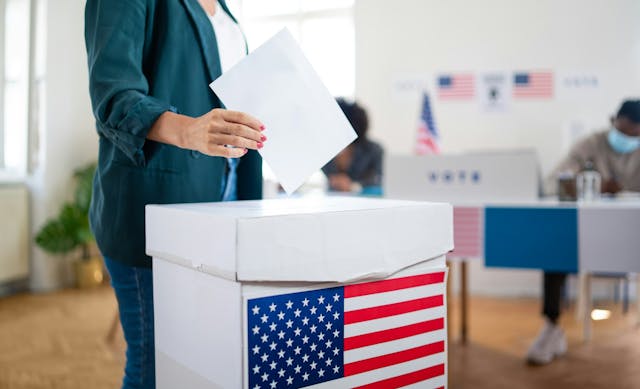Independent Latino Voters Grow at Historic Pace as Parties Give them Lip Service

The Latino community is one of the fastest growing communities in the United States, according to the Pew Research Center. This means that not only are Latino voters reshaping social demographics in the United States, but the nation’s politics as well.
“The Status of Latinos in California” report presented by the Latino Legislative Caucus shows that Latinos make up 38.6% of the total California population, according to the 2014 U.S. Census estimate. That translates into 6.9 million Latino eligible voters — the largest Latino voting population of any state.
Furthermore, Latinos are proportionally underrepresented, comprising only 12.5% of the California State Senate and 23.8% of the State Assembly. In the United States Senate, Latino representation is even more skewed, with only three members of Latino descent.
Traditionally, Latino voters have overwhelmingly favored Democratic presidential candidates. However, Pew reports that there is a surge of Latino voters who have lost their allegiance to the Democratic establishment.
Nationwide, Latino voters are becoming independent at a faster pace than any other demographic. Currently, 30% of registered Latino voters are not affiliated with any party.
Although party-backed candidates have given lip service to Latino voters for years, many Latino voters feel that neither party has done a good job of actually following through with their promises.
The overtime law is one example of an issue where establishment candidates didn't uphold their promises to Latinos.
Farmworkers are excluded from receiving time and a half after an eight-hour work day. On the other hand, “regular” employees are entitled to receive time and a half after eight hours of work per day, and over 40 hours per workweek. Some argue that California farmworkers (approx. 75% of which are Latino) who work ten hours per day are missing out on $600 per month.
Lawmakers had a chance to vote on AB 1313, which would have required daily overtime to be paid to agricultural workers after 8 hours, but members of the Democratic Caucus voted against it.
It is commonly believed that Latino voters are only concerned with immigration, but the fact is that since 2000, Latino population growth has primarily been driven by native births, not immigration. Since more Latinos are native born, their political concerns have shifted to other issues, like jobs and the economy.
While Latinos tend to be more liberal about having a bigger government with more services, they have conservative views on social issues such as abortion. This combination makes Latinos natural independents.
The increasing number of Latinos not affiliating with the major parties will be meaningful in one of the most contested 2016 races in California, which features two high-profile Democrats.
With four-term U.S. Senator Barbara Boxer retiring, Latinos have an opportunity to be adequately represented by electing the first Latina senator in American history. While Democrats continue to disappoint Latinos and Republicans fail to connect with them, it is likely this election will come down to independent voters.
On the Democratic side, Boxer’s seat is being pursued by U.S. Representative Loretta Sanchez, currently representing California’s 46th District in Congress, and California Attorney General Kamala Harris. Both are appealing to Latino voters, but Harris received the Democratic Party’s endorsement over Sanchez.
If anti-establishment presidential candidate Bernie Sanders continues on to California’s June primary, it could heavily influence the turnout of independent-minded Democrats, and Republicans. The lack of establishment support could benefit non-party backed candidates like Sanchez, who has a long history of not toeing the party line.
The effect on turnout could be further amplified by California’s Top-Two Nonpartisan Primary, which is specific to state races, and can confuse voters in the presidential election.
On the Democratic side, independent voters who support Sanders can vote in the Democratic primary, which is “open.” No Party Preference or “independent” voters can walk into their polling location and request a Democratic Ballot.
On the Republican side, many independents who are Trump supporters will not be able to vote for him in the closed Republican primary (because they must be registered Republican). Even more interesting is that these voters can request a Democratic ballot and vote for Bernie, if they are purely anti-establishment.
The 2016 presidential primaries will be an opportunity for Latino voters to speak their minds and elect someone who will actually represent them. Latinos and the broader independent population will affect not only the presidential election, but every race this election.
Photo Credit: Nathan Gibbs



